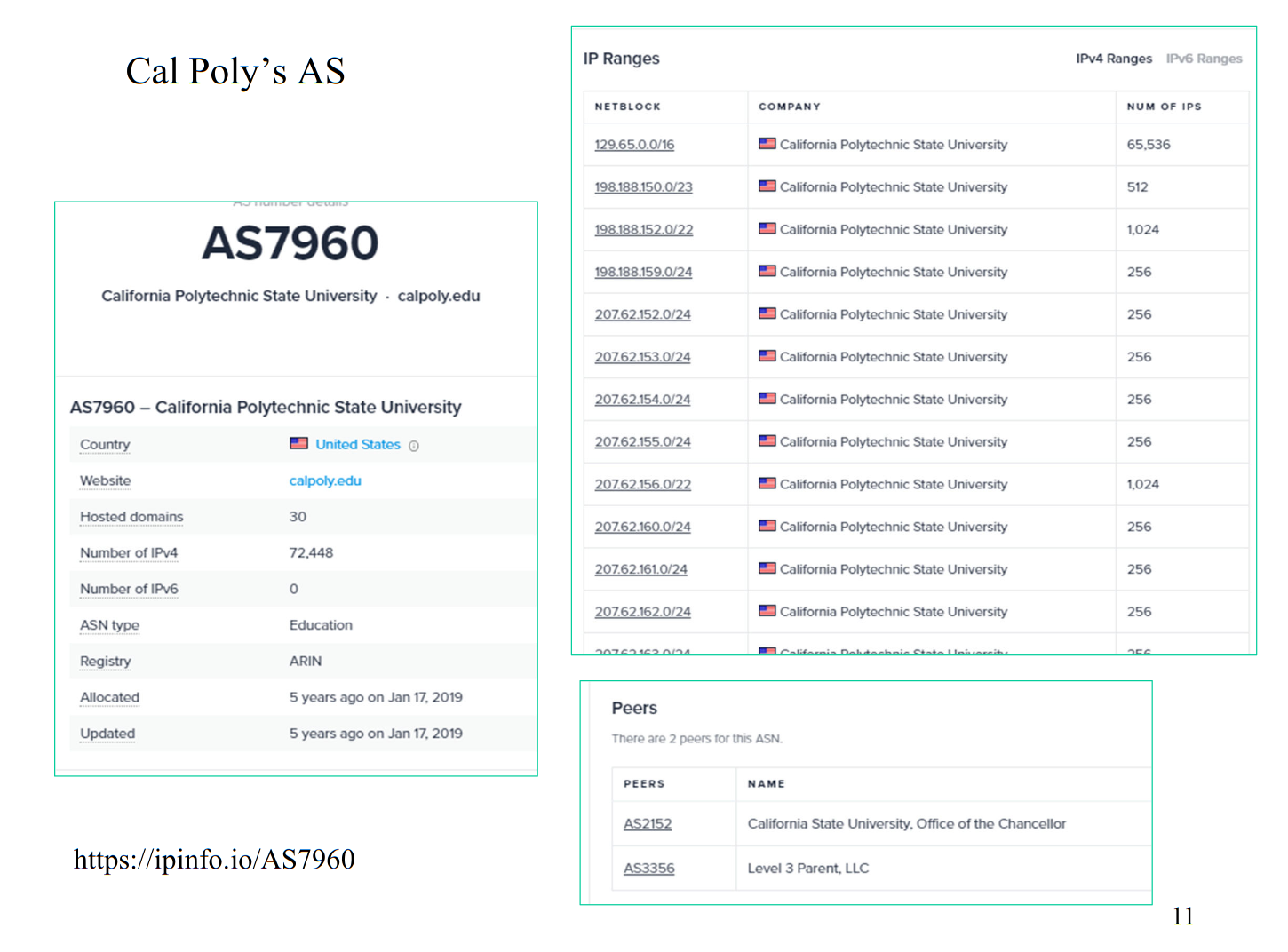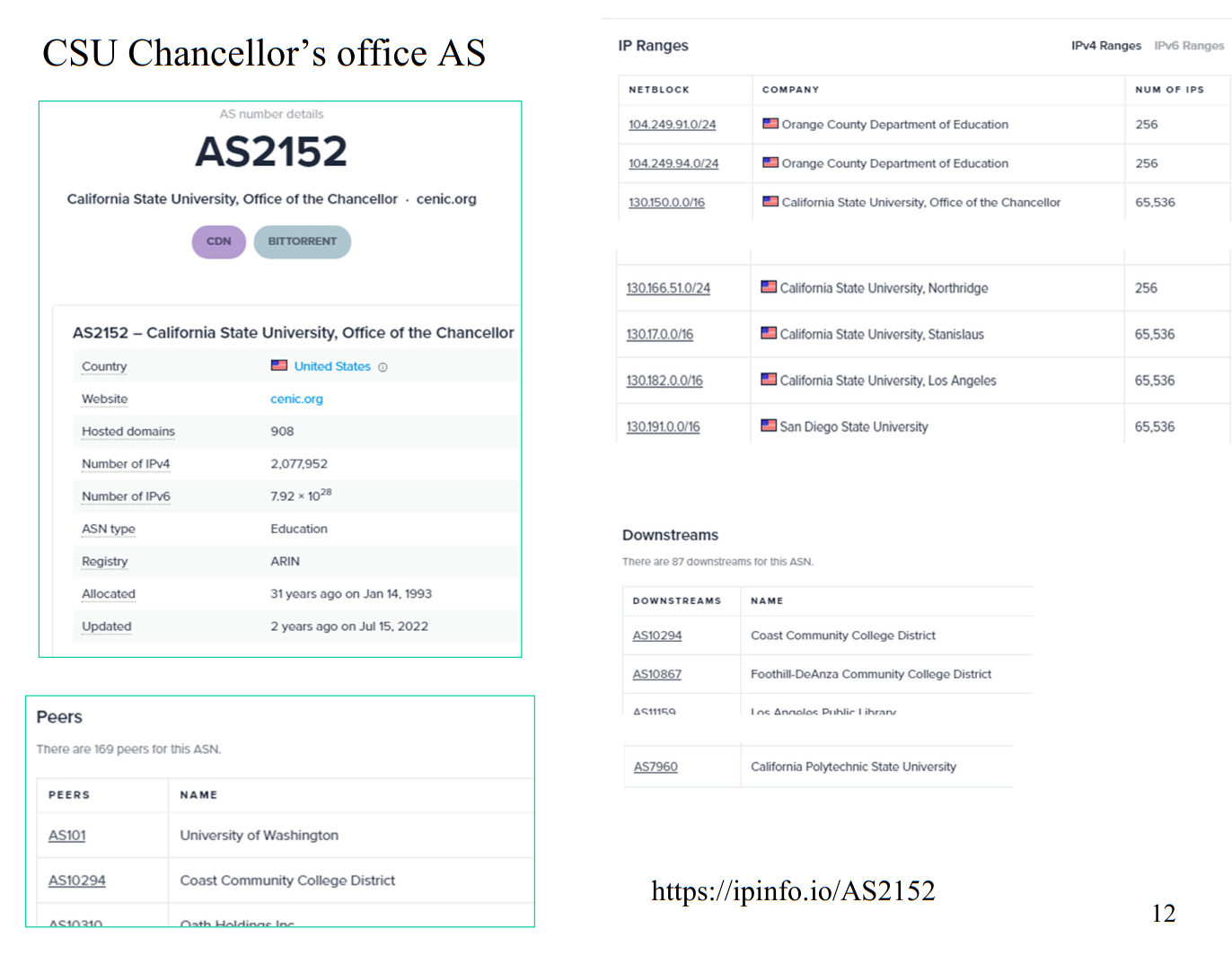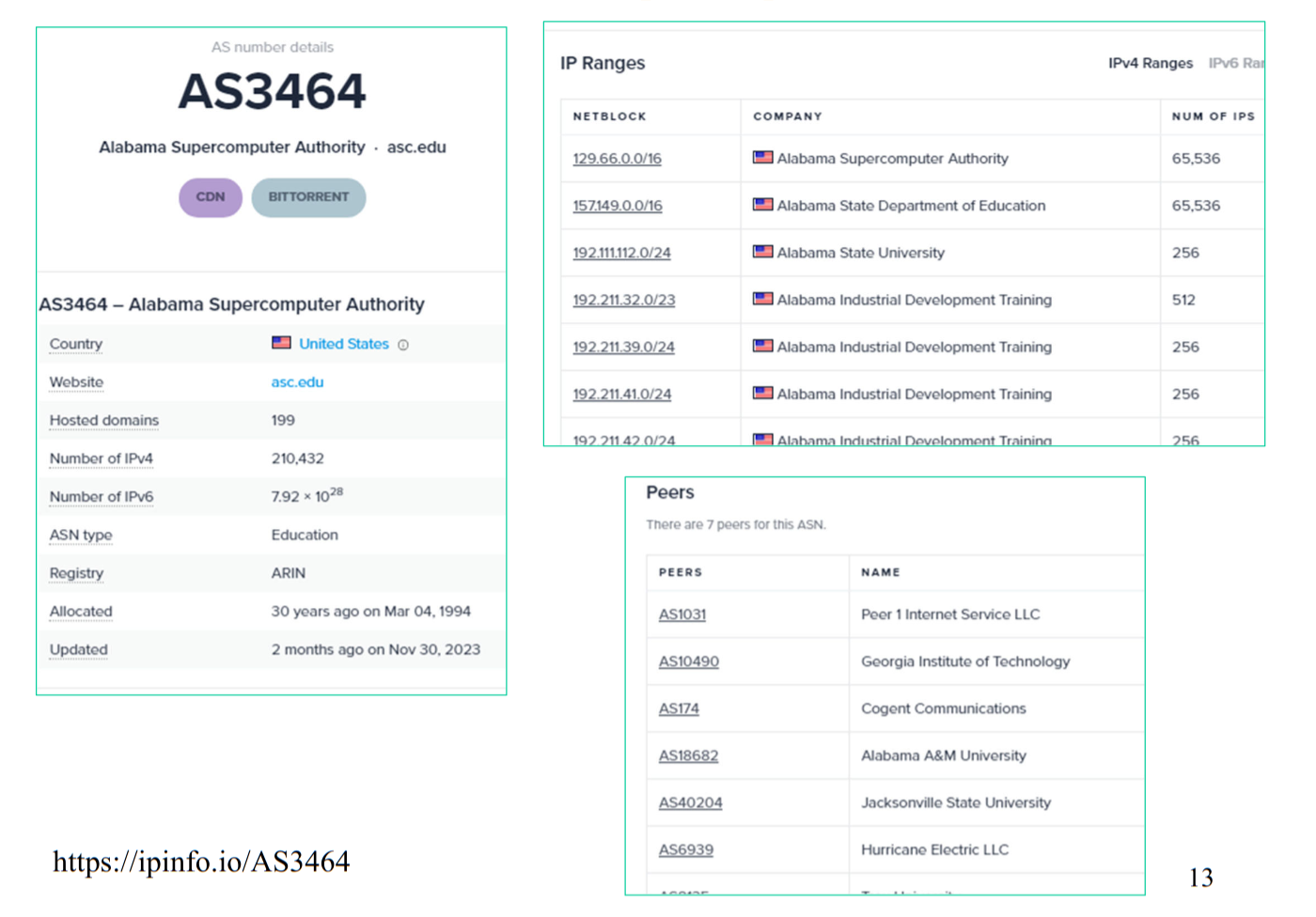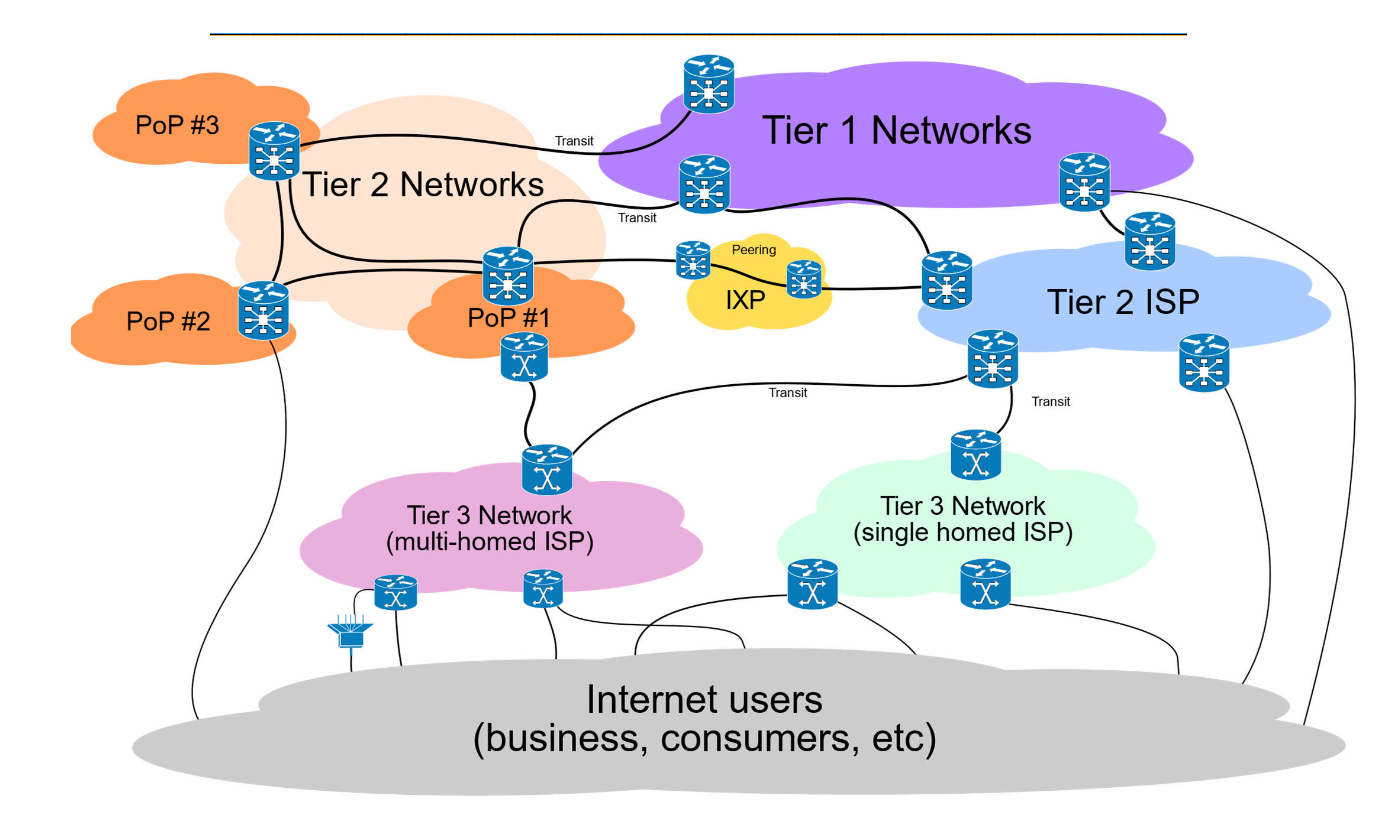7 - AS, Tiered Networks, IGP and EGP
Last time we talked about the whole routing table system that is used. We'll today look at how IP Addressing (IP Protocol) works at the macro-level.
Autonomous Systems (AS)
"An AS is a group of IP networks operated by one or more network operator(s) that has a single and clearly defined external routing policy" - APNIC Website
This is the idea that the internet is made of autonomous systems, or a whole cloud (network) such that everything and everyone is controlled per autonomous system.
The reason we'd want this is:
- Scalability
- Can apply policy to our routes
It could be for one or more companies/organizations but to the outside world it looks like one collection of networks (routing prefixes).
Each AS is assigned a 32-bit number for identification:
- Older AS numbers were 16 bits
- Assign by: Internet Assigned Numbers Authority (IANA)
Peering
Your ISP (Internet Service Provider) will provide internet service to customers. Considering the connections/relationships between AS's is called peering.
A relationship, often between ISP (Internet Service Provider)s. Two ISPs provide cross connectivity to their transit customers. Here a peering point is the physical connection between two ISPs.
An IXP, or Internet Exchange Point, is the physical infrastructure for peering connections.
Types of AS's
Here we briefly describe the types of AS's. Namely there is:
- Stub AS
- Single connection to the outside world, does not carry anyone else's traffic.
- Only routes local traffic (either originated within the AS or destined for a network within the AS)
- Mutihomed AS
- Multiple Connections to the outside world
- Used for redundancy
- Will NOT carry traffic for others (ie: is not a Transit AS)
- Transit AS - carries internet traffic
- An ISP (Internet Service Provider)
- Will carry transit traffice (traffic is just passing through)
- An ISP provides connectivity to the customer
Cal Poly as an AS would be a mutli-homed AS since we have multiple connections to transit ISP's, but we don't route general internet traffic through us.

Notice that Cal Poly doesn't have any downstream ASs, but we are peers, implying we are a stub AS.

However, the CSU Chancellor's office AS does have outgoing traffic (to Cal Poly), so then they are (likely) a multi-modal AS (since they are not an ISP themselves).

And Alabama Supercomputer Authority has so many peers that they (likely) are a transit AS (although they could definitely be multi-modal).
Tiering in Networks
We'll draw something like the following to draw out these Autonomous Systems (AS, Networking)'s:

A point of presence is just usually a smaller IXP. Usually they are more local; say they may be some random point in SLO that would connect to the larger ISP that supplies internet to SLO.
We sometimes divide networks into tiers:
- Tier 1 networks are the largest networks (geographically; global reach)
- Peer with other Tier 1's typically do not pay (since they have the largest connections)
- Backbone of the Internet
- They have their own infrastructure (undersea cables, cross country connections)
- Ex: AT&T, Verizon, Lumen Technologies (Century Link), Level 3 Communications, ...
- Tier 2 networks are usually used for larger ISP (Internet Service Provider)s.
- Are more regional and pay Teir 1 providers for connections
- Peer with other Tier 2's in the local/regional scope
- Doesn't have the global reach of a Tier 1
- Ex: Cox, Comcast, Charter Communications, China Telecom, ...
- Tier 3 networks are usually mutli-homed or single homed ISPs.
- ...

Here the last mile refers to how the cables right from customers/houses usually hit a Tier 3 network (often hitting some repeater or whatnot before getting to the actual network hardware).
IGP, EGP
The steps for handling any router data and finding the path, primarily across Autonomous Systems (AS, Networking), we need to:
- Collect info about the network
- Process the data
- Generate that info to the Routing Table
We have multiple standard routing protocols:
- Interior routing protocols
- May be called Interior Gateway Protocols (IGP)
- Open Shortest Path First (OSPF) (interior, may be used in an ISP Autonomous Systems (AS, Networking) or company network)
- Exterior routing protocols
- May be called Exerior Gateway Protocls (EGP)
- BPG used between AS's
- iBGP Route Redistribution
- Used to redistribute BGP routes within the AS